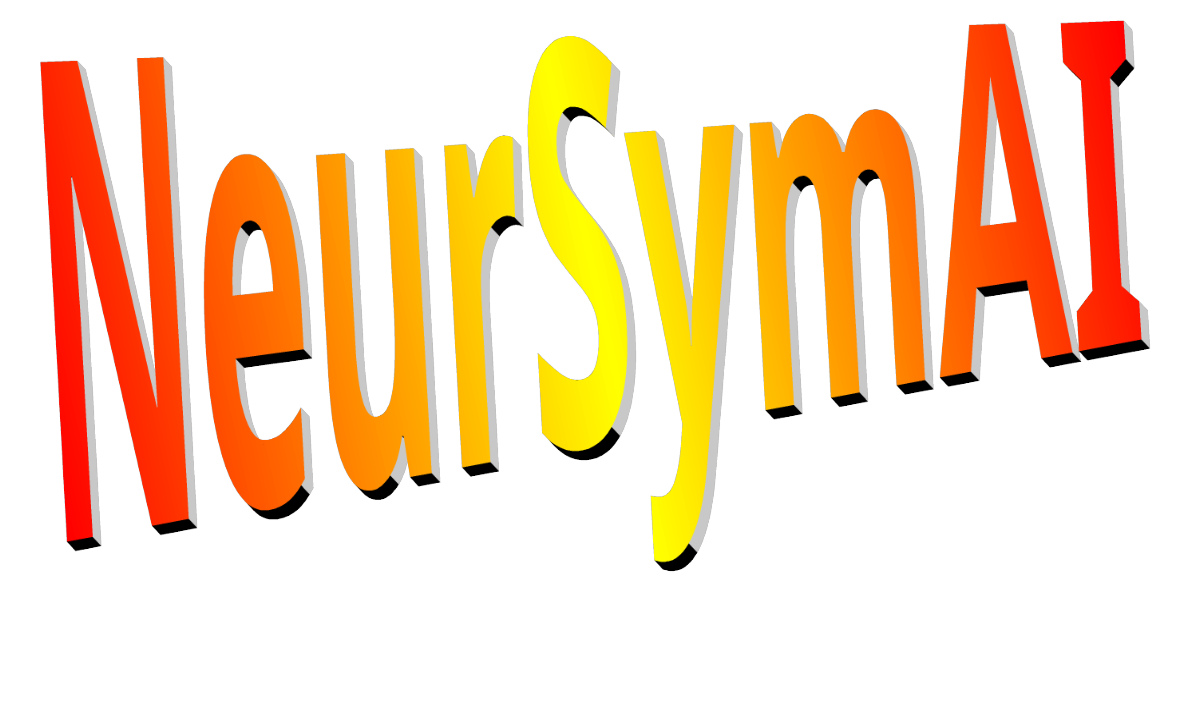
|
Telecom Paris
Dep. Informatique & Réseaux  Nils Holzenberger
← Home pageJanuary 2026
Nils Holzenberger
← Home pageJanuary 2026 |

 Logic, Knowledge Representation and Probabilities
Logic, Knowledge Representation and Probabilities
| with | Samuel Reyd |

|

First steps in ProbLog
The Problog language
Installing details can be found on the ProbLog website and there is also an interactive interface online.
ProbLog is a fairly recent programming paradigm, which came out of machine learning research. This means that sometimes, the implementation or the documentation may be lacking. This is the price to pay for working with cutting-edge technology :)
First steps in ProbLog
Single-pupil
| Write a clause to express "Alice is happy with probability 50%" using the atom alice_is_happy. |
Whether Alice is happy also depends on whether there is a school test and whether the class is fun.
| Write a clause to express "There is a school test with probability 5%" using the atom school_test. |
| Write a clause to express "The class is fun with probability 10%" using the atom fun_class. |
Now let’s add rules that express the relationship between these atoms. As a reminder,
- .7::a :- b. means that if b, then a with probability .7
- .7::\+a :- b. means that if b, then \+ a with probability .7
- \+ a means "not a"
| Write a rule to express "Alice is happy if the class was fun, with probability 30%" using the atoms defined previously. |
| Write a rule to express "Alice is not happy if it’s raining, with probability 70%" using the atoms defined previously, including raining, used in the introduction of this section. |
| Write a rule to express "Alice is not happy if there is a test, with probability 90%" using the atoms defined previously. |
| Taking all the rules defined until now, what is the probability that Alice is happy, knowing that the class was fun? |
Alice, Bob, Charlie, Dorothy and Emily
friend(alice, charlie). % Alice is friends with Charlie
friend(charlie, bob).
friend(dorothy, emily).
friend(X,Y) :- Y @< X, friend(Y,X). % symmetry of friendship
friend(X,Y) :- X\=Y, friend(X,Z), friend(Z,Y). % transitivity of friendship
Since there are multiple pupils, we need to update our previous predicates. The predicate happy now takes 1 argument, the pupil. happy(P) is whether pupil P is happy.
| Write a rule to express "A pupil P is happy if one of their friends Q is happy, with probability 80%". You may test whether the syntax of your rule is correct by running it through the ProbLog interpreter. |
| Taking all the rules defined until now (and dropping any evidence about the class being fun or not), what is the probability that Alice is happy, knowing that there is a school test, that Bob is happy, and Charlie is not happy? Don’t forget to adapt the happy predicate in the rules previously defined to take 1 argument. |
Successive samples
|
As a warmup, write a prolog predicate flips(+PastFlips,-NewFlips) where PastFlips is a list containing heads and tails, and NewFlips is the same as PastFlips but with a new element added at the beginning. You should assume access to a predicate coin/1, defined by two clauses: coin(heads). coin(tails).
After submitting your answer, read the expected answer carefully, as it contains important information for the following questions. |
- Bob puts one marble on the table as a stake.
- Alice flips a coin: if it’s heads, Bob wins and Alice gives him as many marbles as are on stake (in this case 1). If it’s tails, Bob loses. But Bob can try to win his marbles back:
- The stake is doubled, and is now 2. If Bob can afford it, he can place 2 marbles on the table as a stake.
- Alice flips another coin: if it’s heads, Bob wins and Alice gives him as many marbles as are on stake (in this case 2). If it’s tails, Bob loses. But Bob can try to win his marbles back...
- The stake is doubled at every step.
|
Write a ProbLog program that can compute the outcome of the game. Formally, write a predicate game(Win) that simulates a game, where Win is equal to the amount of marbles that Bob has won. Assume that Bob starts with 15 marbles. Win can be positive or negative. To help you write this program: you should write a predicate next(+Marbles,+Stake,+Flips,-Result,-Sequence) where Marbles is the number of marbles Bob has, Stake is the current value of the stake, Flips is the sequence of flips so far, Result is the number of marbles Bob has at the end of the game, and Sequence is the sequence of flips at the end of the game. Result and Sequence serve to store values at the end of the game, like we did in the second lab session with the actions of the monkey. next will call the code provided to you in the answer of the previous question. |
|
In the previous example, because the coin is fair, the expectation of Win is equal to 0. What is Bob’s expected Win if the coin is biased and lands on tails with probability .6?
As a reminder, if Bob can win xi marbles with probability pi, Bob’s expected win is \(\sum \limits_i x_i p_i\). |
This last exercise is related to the St. Petersburg paradox.

Bibliography
- ProbLog2: From Probabilistic Programming to Statistical Relational Learning
- Inference and learning in probabilistic logic programs using weighted Boolean formulas
- ProbLog: A Probabilistic Prolog and its Application in Link Discovery
Tutorials and resources
- ProbLog website
- ProbLog tutorials
- ProbLog documentation
- ProbLog installation instructions
- ProbLog online interface
 Back to the main page
Back to the main page